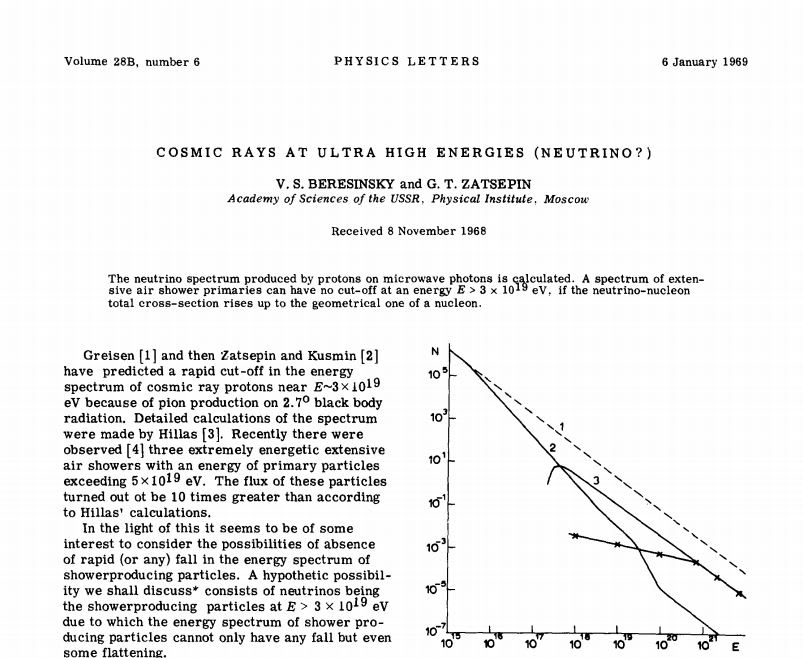Berezinsky, Zatsepin, Greisen, and Kuzmin propose cosmogenic neutrino production theory
In 1969, Veniamin S. Berezinsky and Georgy T. Zatsepin suggested that it was possible to observe ultra-high-energy neutrinos known as cosmogenic neutrinos. By that time, Zatsepin, American physicist Kenneth I. Greisen, and Russian theorist and cosmologist Vadim A. Kuzmin had independently discovered an upper limit of cosmic ray energies. They realized that ultra-high-energy cosmic rays should interact with photons in the cosmic microwave background to produce neutrinos at ultrahigh energies. These cosmogenic neutrinos were estimated to have energies between a PeV (1015 eV) and a million PeV (1021 eV). Today, they are called GZK neutrinos for Greisen, Zatsepin, and Kuzmin.
The GZK mechanism produces a “guaranteed” flux of extremely high energy neutrinos. However, the neutrino flux depends on the composition of the cosmic rays that produce it. If the extremely high energy cosmic rays are primarily protons, the GZK neutrino should be observable with the next generation of neutrino telescopes and radio experiments. If extremely high energy cosmic rays are composed of heavier nuclei, the neutrino flux will be much lower and difficult to observe.
